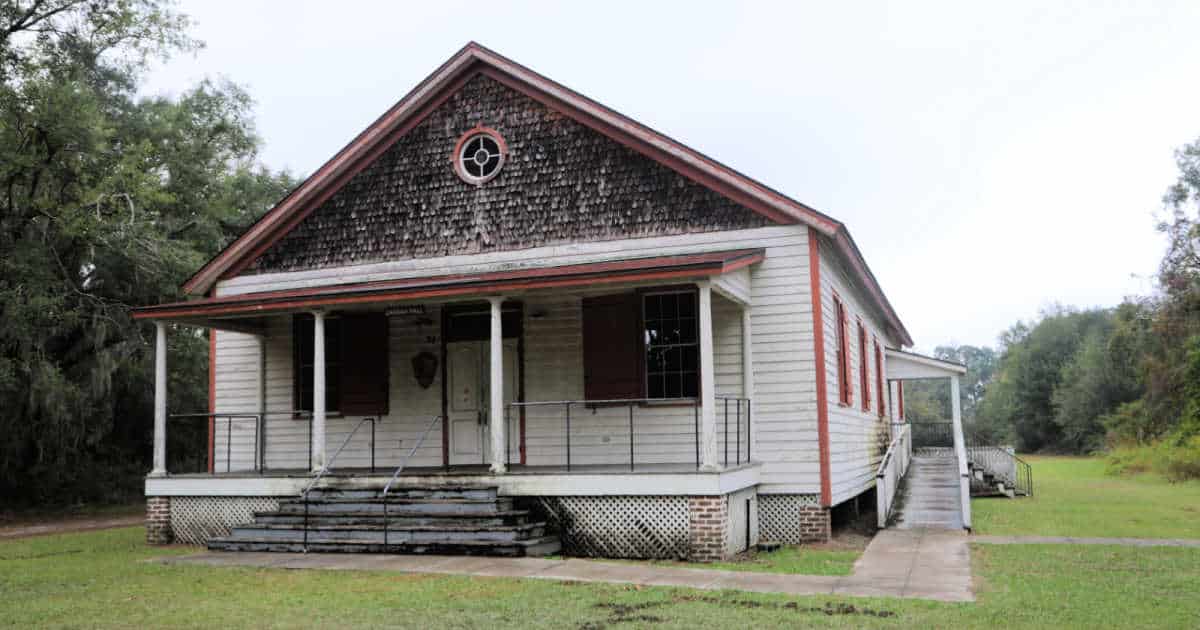Reconstruction Era National Historical Park – South Carolina’s Post-Civil War History

Have you ever wondered what happened in the South after the Civil War? The Reconstruction Era National Historical Park in South Carolina offers a glimpse into this transformative period. This park preserves sites that tell the story of newly freed African Americans and their quest for equality. Visitors can explore historic buildings, learn about significant events, and understand the challenges faced during Reconstruction. From the Penn Center, one of the first schools for freed slaves, to the Old Beaufort Firehouse, each location provides a unique perspective on this critical time in American history. Whether you're a history buff or just curious, this park offers a rich, educational experience.
Discovering the Reconstruction Era National Historical Park
Located in South Carolina, the Reconstruction Era National Historical Park offers a deep dive into the transformative period following the Civil War. This park highlights the struggles, achievements, and significant changes that shaped the United States during the Reconstruction era. Let's explore some key places within this historical park.
Penn Center
The Penn Center, located on St. Helena Island, is one of the most significant sites within the park. Established in 1862, it was one of the first schools in the South for formerly enslaved individuals.
- York W. Bailey Museum: This museum showcases artifacts, photographs, and documents that tell the story of the Penn Center and its role in educating freed African Americans.
- Brick Baptist Church: Built by enslaved people in 1855, this church became a central meeting place for the community during Reconstruction.
- Darrah Hall: The oldest building on the Penn Center campus, Darrah Hall served as a community gathering spot and educational facility.
Beaufort National Cemetery
Beaufort National Cemetery is a solemn reminder of the sacrifices made during the Civil War and the Reconstruction era. Established in 1863, it serves as the final resting place for many Union soldiers and notable figures from this period.
- Graves of the 55th Massachusetts Infantry: This African American regiment played a crucial role in the Union Army, and many of its members are buried here.
- Memorial Day Ceremonies: Each year, the cemetery hosts ceremonies to honor those who fought and died during the Civil War and Reconstruction.
Historic Beaufort
The city of Beaufort itself is rich with history from the Reconstruction era. Walking through its streets, visitors can see numerous landmarks that played a role in this transformative period.
- Robert Smalls House: Home of Robert Smalls, an African American who escaped slavery, became a Union naval hero, and later served in the U.S. Congress.
- Tabernacle Baptist Church: This church was a hub for African American community life and activism during Reconstruction.
- Beaufort Arsenal: Now a museum, this building served as a military post during the Civil War and Reconstruction.
Mitchelville Freedom Park
Mitchelville, located on Hilton Head Island, was the first self-governed town of formerly enslaved people in the United States. Established in 1862, it became a model for other freedmen's communities.
- Reconstructed Homes: Visitors can see replicas of the homes that once stood in Mitchelville, giving a glimpse into the lives of its residents.
- Interpretive Trails: These trails provide information about the history of Mitchelville and the people who lived there.
- Freedom Day Celebrations: Annual events celebrate the history and legacy of Mitchelville, featuring reenactments, music, and educational programs.
Old Beaufort Firehouse
The Old Beaufort Firehouse, built in 1912, now serves as a visitor center for the Reconstruction Era National Historical Park. It offers resources and information to help visitors understand the significance of the sites within the park.
- Exhibits on Reconstruction: The firehouse features exhibits that explain the key events and figures of the Reconstruction era.
- Guided Tours: Knowledgeable guides offer tours that provide deeper insights into the history and impact of Reconstruction in South Carolina.
- Educational Programs: The visitor center hosts programs for students and educators to learn more about this pivotal period in American history.
Discovering the Reconstruction Era National Historical Park
Visiting the Reconstruction Era National Historical Park in South Carolina offers a unique glimpse into America's past. This park highlights the struggles and triumphs of the post-Civil War period. Exploring sites like the Old Beaufort Firehouse and Penn Center provides a deeper understanding of the challenges faced during Reconstruction.
Walking through these historic locations, you can almost feel the determination and resilience of those who lived through this transformative time. The park's exhibits and guided tours bring history to life, making it an educational experience for visitors of all ages.
Whether you're a history buff or just curious about this pivotal era, the Reconstruction Era National Historical Park is a must-visit. It stands as a testament to the enduring spirit of a nation rebuilding itself. Don't miss the chance to learn and reflect on this significant chapter in American history.

